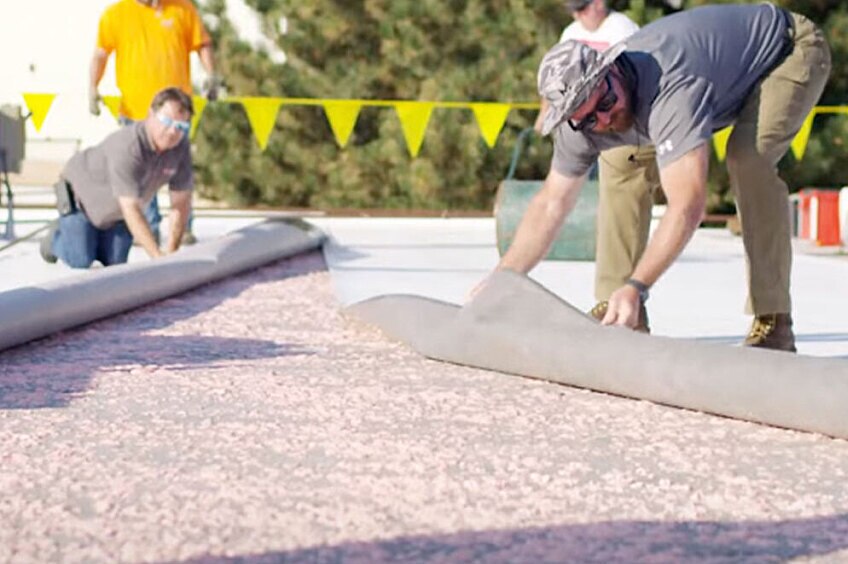As a contractor, you're constantly on the lookout for ways to get the job done quickly while continuing to provide a high level of quality to customers. Carefully selecting the materials you use can help—and with new roofing technologies being developed every day, you have a lot of options.
Thermoplastic polyolefin (TPO) single-ply membranes are a cost-effective solution for commercial roofs. And when you add a fleece backing, the resulting fleece-back TPO adds even more durability, protection, and strength to the system. The material can be used for both reroofing projects and new installations.
The Benefits of Fleece-Back TPO Membranes
Here are a few reasons TPO with a fleece backing might be the perfect solution for your next roofing job:
1. Performance and Durability
Fleece-back TPO, like GAF Everguard® TPO Fleece-Back Membrane, provides excellent performance and durability. It's available in a variety of new thicknesses that make it easier than ever to find one that's suitable for your project. For instance, the GAF EverGuard® TPO Fleece‑Back 100, 115, and 135 Membranes offer good impact resistance, as some systems are approved under Factory Mutual (FM) 4470 - Very Severe Hail (Class 1 - VSH).* These membranes are especially suitable for high-traffic roofs, because they provide added protection during regular maintenance of HVAC systems, for example.
2. Ease of Installation
Installing fleece-back TPO membranes can be done easily and efficiently, saving roofers time and labor. They can be mechanically attached for fast installation, or combined with adhesives like the GAF LRF Adhesive XF to reduce overall thermal bridging and add wind resistance capabilities.
Commercial building owners and property managers that want jobs finished as quickly as possible will find mechanically attached fleece-back TPO membranes to be an excellent option. Watch the following video to see how they're installed:
Because of their versatility, fleece-back TPO membranes are also a popular choice for reroofing projects if your customer isn't looking to completely remove an existing roof:
3. UV Ray Protection and Energy Savings
Fleece-back TPO membranes come in white and light colors, and they're designed to be ultraviolet (UV) resistant and reflect the sun's rays. By reflecting the sun rays away from the roof, white or light fleeceback TPO membranes can help lower the temperature of the roof and increase the roof's longevity.
4. Excellent Warranty or Guarantee Coverage
The robust build of fleece-back TPO membranes means manufacturers can often offer good warranty or guarantee coverage. Depending on the thickness of the membrane and the method of attachment, you could be covered from 20 to 25—or even up to 30—years. This reflects confidence in the quality of the material and provides peace of mind for property owners and managers.
Other Considerations for Fleece-Back TPO Roofing
While fleece-back TPO membrane is typically more expensive than other commercial roofing solutions like smooth TPO, the installed cost may be comparable depending on the installation method used: you can estimate the cost of the EverGuard® Fleece-Back TPO needed for your project using the TPO Material Calculator on the GAF EverGuard® TPO Fleece‑Back Membrane product page. As an added benefit, GAF EverGuard® TPO membranes are made in the U.S.A. with domestic and imported materials.
The speedy installation possible with these membranes is convenient for customers and contractors alike, and the durability provides long-term performance. Plus, the fleece-back TPO works well in all areas—even those with harsh weather—so it's not limited to specific locations.
If this TPO sounds like the perfect material for your next project, visit the GAF EverGuard® TPO Fleece‑Back product page to learn more.
*See FM Global Data Sheet 1-34 for more information. Visit RoofNav.com for approved assemblies.

